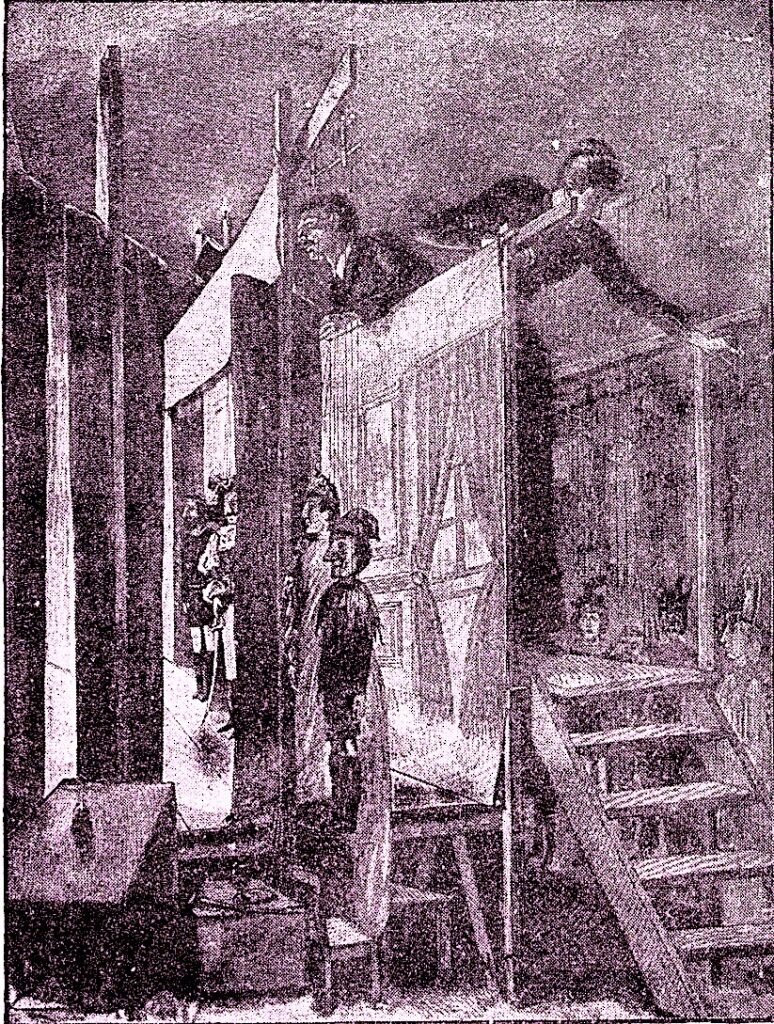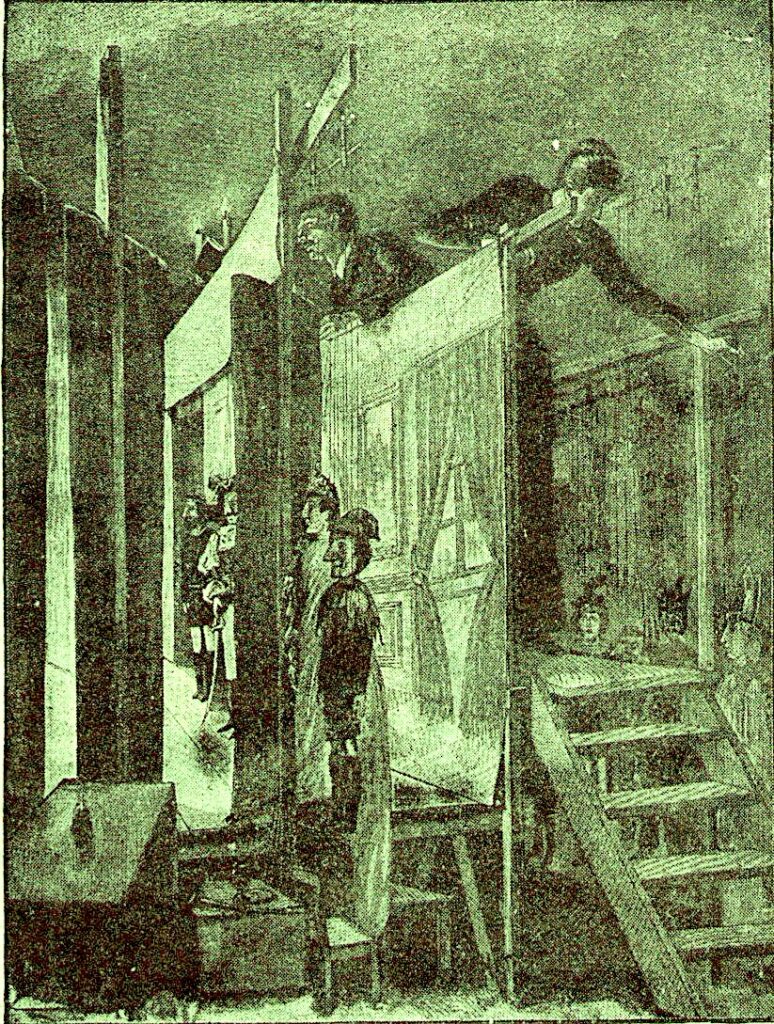Esta mujer es la autora de la imagen mas antigua de Alemania y de Europa sobre el arte de los títeres la cual incluyó en la enciclopedia El Jardín de las Delicias, la primera hecha por una mujer, en la cual trabajó por mas de 30 años con el apoyo de 60 monjas cuyos retratos y nombres fueron incluidos como diciendo “Aquí estamos, nosotras fuimos quienes hicimos ese libro”. Y aun así hay libros sobre nuestro arte que la borran de la historia diciendo que Herrad fue un abate y no una abadesa.
This woman is the author of the oldest image in Germany and Europe on the art of puppetry, which she included in the encyclopedia The Garden of Earthly Delights, the first made by a woman, on which she worked for more than 30 years with the support of 60 nuns whose portraits and names were included as if to say “Here we are, we were the ones who made that book.” And yet there are books about our art that erase her from history saying that Herrad was an abbe and not an abbess.
Español
Herrad de Landsberg (1125 o 1130 -1195), fue una monja alsaciana del siglo XII y abadesa de la abadía de Hohenburg en los montes Vosgos. Es conocida, sobre todo, por ser la primera mujer que editó una enciclopedia en pleno siglo XII (hacia 1170) con el fin de educar a las jóvenes de su monasterio. Manuscrito iluminado de 325 páginas, 340 iluminaciones) que fue destruído durante la guerra de Estrasburgo en 1870, pues se encontraba ahí resguardado. De las reproducciones que se habían hecho, en el folio 215 dice la WEPA (World Encyclopedia of Puppetry Arts): “había una iluminación que mostraba a dos malabaristas manejando dos figuras de guerreros en cota de malla, armados con espada y escudo, enzarzados en combate. El juego tiene lugar sobre una mesa (ver Títeres de mesa ). Las figuras están manipuladas por medio de dos cuerdas horizontales, utilizando una técnica que recuerda a los títeres en una planchette, excepto que las cuerdas aquí se sujetan con la mano y no están unidas a la pierna del actor.”
La imagen a que hace referencia es esta, para ilustrar una frase del Eclesiastés sobre la vanidad del mundo, este manuscrito mostraba a dos caballeros movidos por alambres cruzados tirados por dos malabaristas: una especie de marionetas.
Y yo me pregunto si el titiriterO de la izquierda será una mujer y fue la interpretación de los historiadores quienes la han borrado como borraron a las juglaresas y cantadoras medievales también o la interpretación.
Buscando imágenes del siglo XII, los juglares y malabaristas usaban esas faldas cortas de la figura de la derecha, y las juglaresas, que también las había y no nos lo habían contado, llevaban faldas mas largas.
De la página https://www.rivasactual.com/mujeres-singulares-en-plural-herrada-de- landsberg/ , del artículo Esperanza Negueroles – 12/06/2021, extraigo la historia de ella, aunque hay mucha información en la red, me decidí por esta ya que está contada desde perspectiva femenina, y eso es muy importante.
En el siglo XII y en otros también, tomar los hábitos era la única posibilidad de acceder al conocimiento: Teología, Patrística, lenguas clásicas, autores antiguos. “En el caso de las hijas de reyes y nobles, si no se concertaba matrimonio para ellas, era frecuente que fundaran monasterios de los que terminaban siendo abadesas”.
En el caso de la abadía de Hohenburg, esta era conocida por ser un centro de cultura y reformas eclesiásticas que contaba con el apoyo del Emperador Fernando I Barbarroja.
Herrade fue elegida abadesa en el año 1167, a la edad de 37 años. Reelegida democráticamente por sus compañeras, desempeñó el cargo durante 28 años.
Hacia 1165, Herrade, junto a unas sesenta canonesas, empezó a escribir e ilustrar lo que se considera la primera enciclopedia escrita por una mujer; es un compendio de todas las ciencias estudiadas en su época, incluyendo la teología… El esfuerzo principal se enfocaba en las miniaturas para acentuar, con toda probabilidad, el carácter didáctico del Hortus, que era “una especie de libro de texto”
Aparte de citar una gran variedad de fuentes, otra diferencia significativa de Herrada respecto a otras autoras medievales es la importancia menor que otorga a la inspiración divina en su proceso creativo y, asimismo, la atención que en su obra reciben, en cambio, la filosofía y las artes liberales… Está ilustrado con imágenes muy ricas y valoradas artísticamente, que muestran una imaginación fértil y original. Son 336 ilustraciones y representaciones simbólicas de temas filosóficos, teológicos y de otros relacionados con la literatura y que han sido de gran interés para la historia de la pintura, de la vestimenta y costumbres de la época.
Quizá consciente de que su obra era un esfuerzo coral, quiso recompensar el trabajo de las dibujantes y escribas y tuvo la genialidad de incluir un retrato minucioso e individual de las monjas del scriptorium de Hohenburg como colofón de esta obra que costó treinta años de trabajo «Fotografiándolas» para la posteridad tal y como eran: cada una con su tocado diferente en la cabeza, mayores y jóvenes, altas y encorvadas, con nombre propio y singularidad intransferible.
En suma, es el retrato de un instante del siglo XII, aquel momento en el que, al terminar un trabajo muy extenso y minucioso, las sesenta monjas que fatigaron su mirada, sus manos y su intelecto en los folios del Hortus, se detienen y posan para nosotros. “Aquí estamos, nosotras fuimos quienes hicimos ese libro”, susurran.
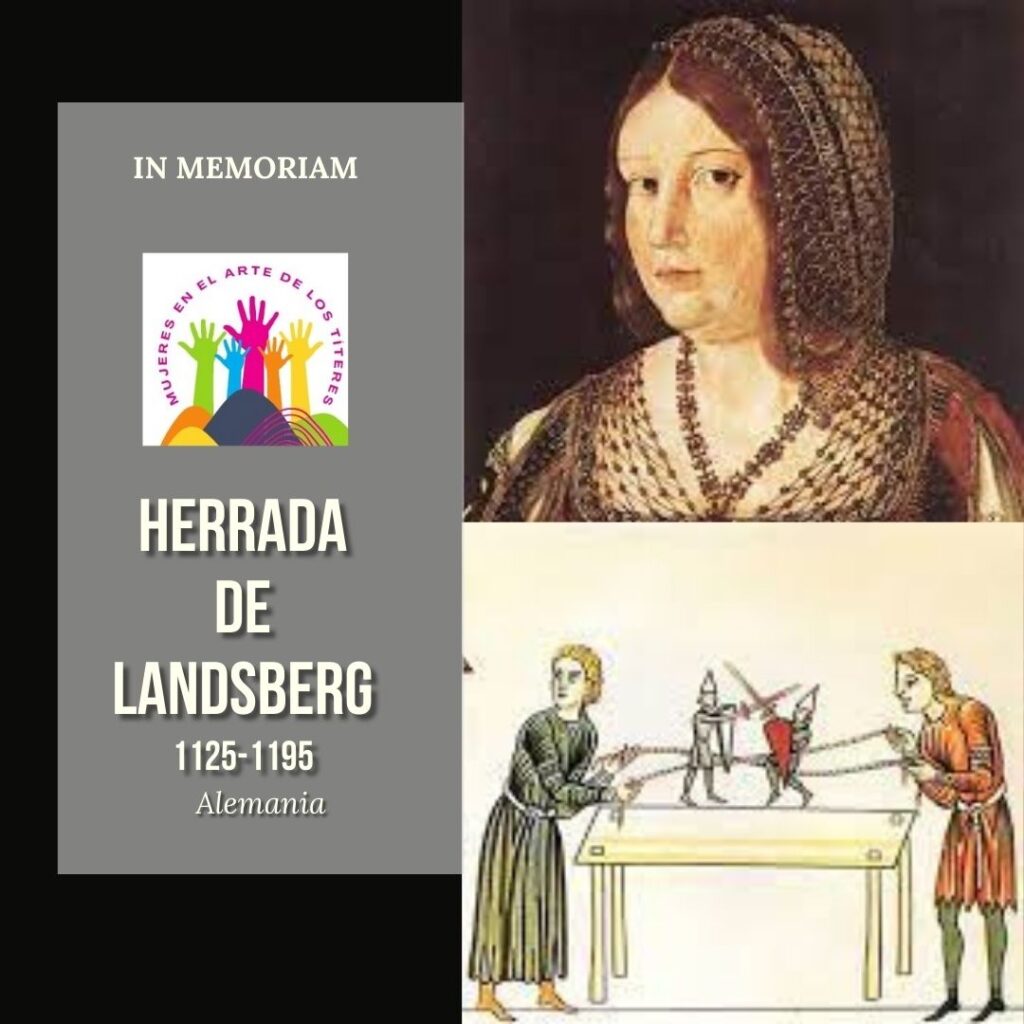
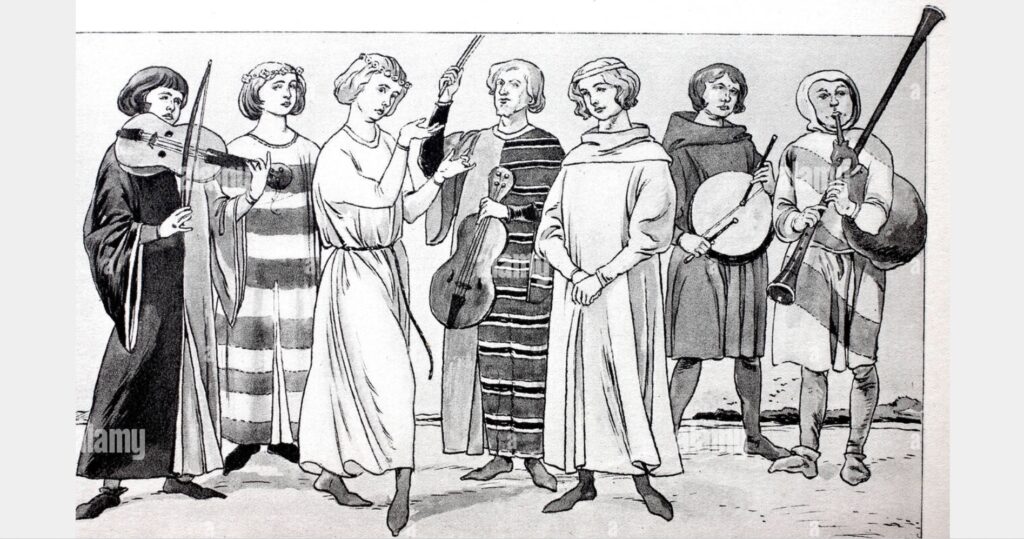
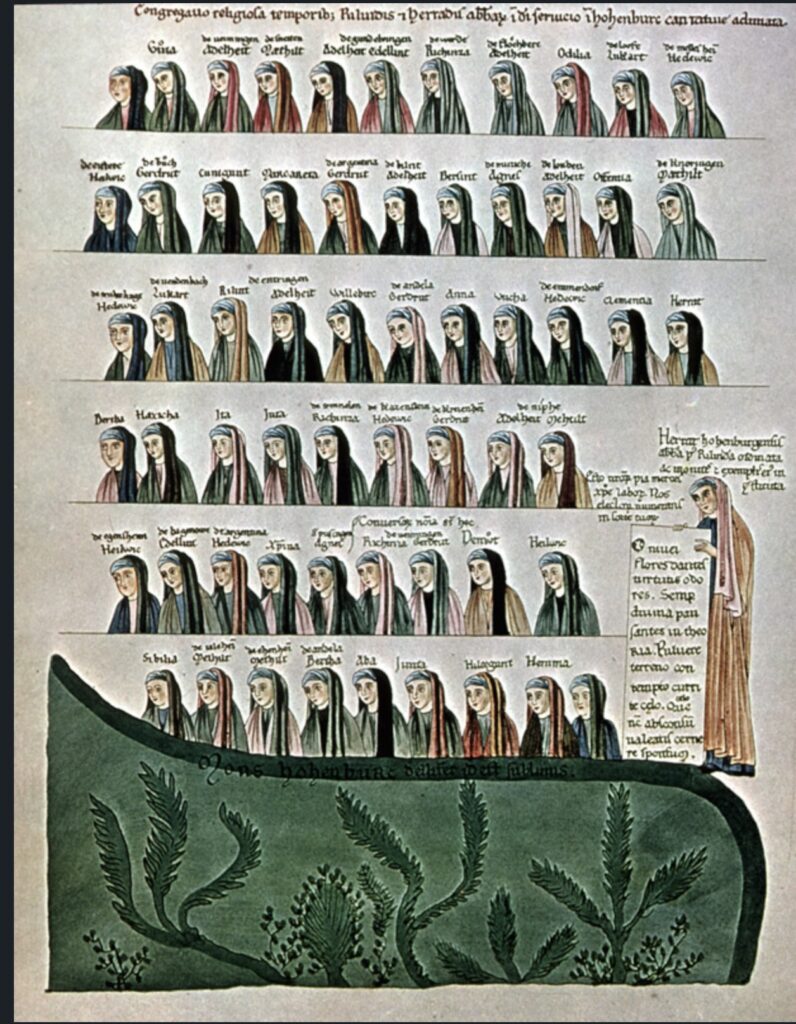
Inglés (translation by google)
Herrad of Landsberg (1125 or 1130 -1195), was a 12th-century Alsatian nun and abbess of Hohenburg Abbey in the Vosges Mountains. She is known, above all, for being the first woman to edit an encyclopedia in the 12th century (around 1170) in order to educate the young women of her monastery. Illuminated manuscript of 325 pages, 340 illuminations) that was destroyed during the Strasbourg War in 1870, as it was kept there. Of the reproductions that had been made, on folio 215 the WEPA (World Encyclopedia of Puppetry Arts) says: “there was an illumination that showed two jugglers handling two figures of warriors in chain mail, armed with sword and shield, engaged in combat. The game takes place on a table (see Table Puppets). The figures are manipulated by means of two horizontal strings, using a technique reminiscent of puppets on a planchette, except that the strings here are held by the hand and are not attached to the actor’s leg.”
The image referred to is this, to illustrate a phrase from Ecclesiastes about the vanity of the world, this manuscript showed two knights moved by crossed wires pulled by two jugglers: a kind of puppets.
And I wonder if the puppeteer on the left is a woman and it was the interpretation of the historians who have erased her as they erased the medieval minstrels and singers as well, or the interpretation.
Looking for images from the 12th century, the minstrels and jugglers wore those short skirts of the figure on the right, and the minstrelses, who also existed and had not been told to us, wore longer skirts.
From the page https://www.rivasactual.com/mujeres-singulares-en-plural-herrada-de-landsberg/, from the article Esperanza Negueroles – 06/12/2021, I extract her story, although there is a lot of information in the network, I decided on this one since it is told from a female perspective, and that is very important.
In the 12th century and in others as well, taking the habits was the only possibility of accessing knowledge: Theology, Patristics, classical languages, ancient authors. “In the case of the daughters of kings and nobles, if a marriage was not arranged for them, it was common for them to found monasteries of which they ended up being abbesses.”
In the case of Hohenburg Abbey, it was known for being a center of culture and ecclesiastical reforms that had the support of Emperor Ferdinand I Barbarossa.
Herrade was elected abbess in the year 1167, at the age of 37. Democratically re-elected by her colleagues, she held the position for 28 years.
Around 1165, Herrade, along with about sixty canonesses, began to write and illustrate what is considered the first encyclopedia written by a woman; It is a compendium of all the sciences studied in her time, including theology… The main effort was focused on the miniatures to accentuate, in all probability, the didactic nature of the Hortus, which was “a kind of textbook.”
Apart from citing a wide variety of sources, another significant difference between Herrada and other medieval authors is the lesser importance she gives to divine inspiration in her creative process and, likewise, the attention that philosophy receives in her work. and the liberal arts… It is illustrated with very rich and artistically valued images, which show a fertile and original imagination. There are 336 illustrations and symbolic representations of philosophical, theological and other themes related to literature and that have been of great interest for the history of painting, clothing and customs of the time.
Perhaps aware that his work was a choral effort, he wanted to reward the work of the draftsmen and scribes and had the genius to include a meticulous and individual portrait of the nuns of the Hohenburg scriptorium as the culmination of this work that took thirty years of work « Photographing them for posterity as they were: each one with a different headdress, old and young, tall and stooped, with their own name and non-transferable uniqueness.
In short, it is the portrait of a moment in the 12th century, that moment in which, at the end of a very extensive and meticulous work, the sixty nuns who tired their eyes, their hands and their intellect on the pages of the Hortus, stop and They pose for us. “Here we are, we were the ones who made that book,” they whisper.


